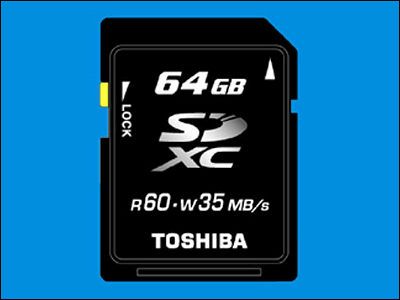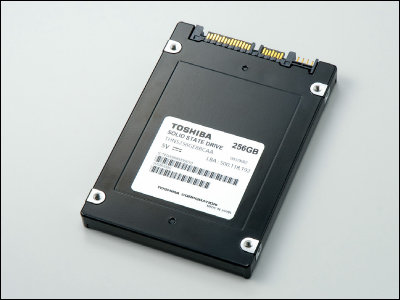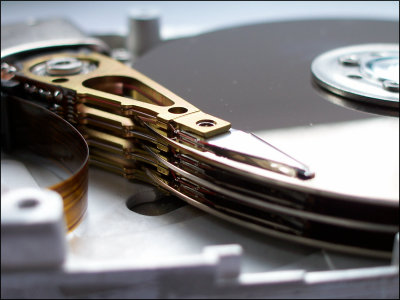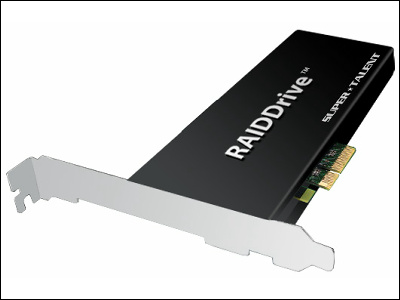Transfer speed overwhelming USB memory, what is the power of "eSATA flash memory"?
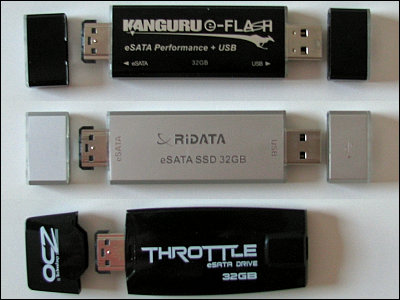
USB memory has become widespread, coupled with the ease of carrying large capacity data and the price decline of flash memory, but there seems to be "eSATA flash memory" that can transfer data at a higher speed than USB memory.
And, as a result of actually measuring the transfer speed, it became clear that overwhelming performance was realized.
Details are as follows.
Supercharge Your Flash Drive with eSATA: An eSATA Flash Drive Market is Born
According to this article, a memory called "eSATA flash memory" appears to be replacing widely used USB memory. This is because the transfer speed of the USB memory comes up to 480 Mbps (60 Mb / s) only due to the USB 2.0 standard limit,ESATAIt achieves transfer rate of up to 3 Gbps (375 MB per second) per second by adopting it.
Also, because it adopts a USB connector for PC users who do not adopt the eSATA interface, it can also be used as a USB memory.
This is "eSATA flash memory". From above, Kanguru's "e-Flash", RiData's "eSATA SSD", OCZ's "Throttle eSATA DRIVE", both have a capacity of 32 GB.

Comparison of average reading speed. All three eSATA flash memories outperform Seagate HDDs. Note that the performance of eSATA flash memory when connecting with USB is halved to 1/3 or less.
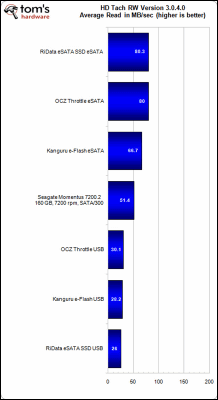
Comparison of average write speed. Again the eSATA flash memory is explosive.

Comparing at maximum speed. Even though the HDD exceeds the eSATA flash memory, the eSATA flash memory also achieves the inevitable speed. Performance when connecting with USB is low enough that it is not comparable.

Although it is a very fast eSATA interface, it seems that Acer, Asus, Fujitsu, Gateway, HP, Toshiba etc. are starting to load eSATA terminals in their laptops.
Related Posts:
